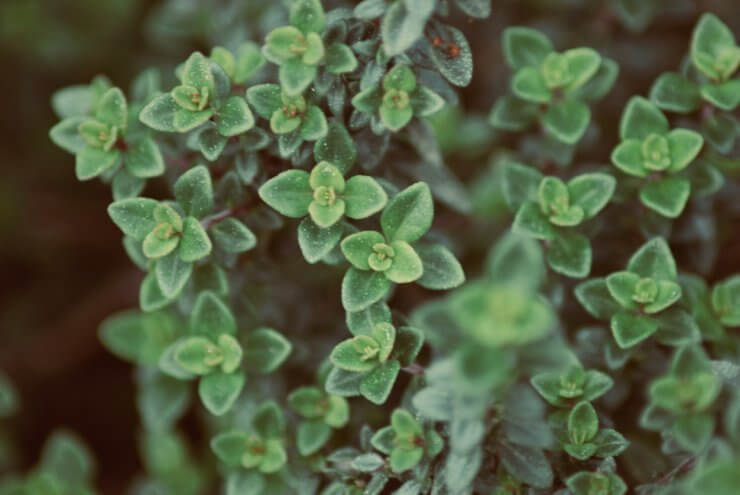
Lemon Thyme, a culinary variety
Thyme comes in two main types: culinary and ornamental. Within each type, you’ll find varieties that are prostrate (low-lying and spreading) or upright (growing tall). Luckily, many thyme varieties look beautiful in the garden and can be used in cooking.
Culinary thyme varieties can be consumed and add aroma and flavor to a wide range of dishes and beverages. Although there are fewer culinary thyme plants than ornamental ones, there’s still plenty of varieties to choose from. Culinary thyme grows best in the garden, window boxes, and containers. Popular culinary thyme varieties include English, French, and Lemon.
Ornamental thyme includes most thyme plants. Though some ornamental thyme varieties can also be used in the kitchen, they shine as ground cover, creeping over expanses of land, adding interest in rock and container gardens, or providing pillows of fragrant foliage along stone paths. Most groundcover thymes can withstand a light amount of foot traffic. Popular ornamental thyme varieties include Woolly, Caraway, and Lavender.
Of course, there’s no reason why you can’t grow both types of thyme in your garden and enjoy its aromatic properties out in your yard as well as in your kitchen.
Have you tried growing ornamental or culinary thyme? Which do you prefer? Please share your opinion in the comment section below.


 Previous
Previous


I have lemon thyme